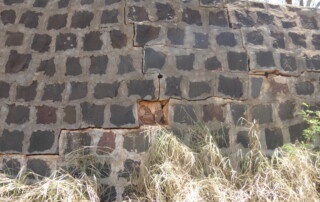Planning Repair Work: Examples of Documentation
As a responsible preservationist, you are about to undertake a repair project on a historic structure. Up to this point, you have surveyed the property, identified character-defining features (those features that contribute to the historic significance of the property), evaluated the condition of those features, and determined that repair is necessary. You are now ready to plan for the appropriate treatment method to preserve the integrity of the historic property. Following the Secretary of the Interior’s (SOI) Standards number 5 and 6 for Rehabilitation: Distinctive features, finishes, and construction techniques or examples of craftsmanship that characterize a property shall be preserved. Deteriorated historic features shall be repaired rather than replaced. A critical step in preparation for physical repair is to document the location and configuration of the historic feature. Examples of the type and importance of documentation are presented below. EXAMPLES OF DOCUMENTATION I. Rehabilitation of a Retaining Wall: The Mortared Stone Retaining Wall at Honouliuli National Historic Site In order to stabilize the historic stone wall (shown in images at top), portions must be removed to allow access to the unstable earth and fill behind. Upon stabilization of the supporting fill, the stone wall will be reconstructed to exactly match the original configuration. Notes by the architect include: Image 1, Site map of the location and access. Image 2, Topographic survey pinpoints the area of repair work. Image 3, Numbered stone diagram recommends how to organize the removal of stones. "Remove all numbered stones per the drawings. Each face stone shall be numbered on one side or back, with a non-water-soluble marker, in a manner that will also indicate the orientation of the stone (e.g. which edge is the [...]





